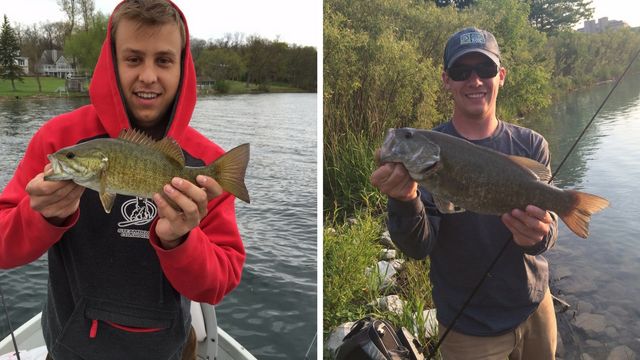
How To Catch Smallmouth Bass In Current
The heat of summer is quickly approaching and catching smallmouth can become a daunting task. Many anglers will target them in the deeper, colder water, but an often overlooked area is in streams or rivers with heavy current. The moving water will typically be cooler than the lakes while also providing a continuous supply of oxygen and food, thus creating a perfect smallmouth summertime home. Now the only trick is “How to catch them?”
Understanding Current’s Role
Before I ever start fishing, I stop and take a moment to read the current. This is the most crucial step to catching fish because to catch them, you must understand how to present your bait naturally. Moving water essentially creates a conveyer belt of food, washing everything down to the fish without them having to travel for it. For the bass to eat your bait, you also have to present your bait with the current. This means casting upstream of your target so your bait has time to sink before it drifts downstream into the strike zone. I typically cast to 2 o’clock if I want to target fish at 11 o’clock, but this can change with varying water speeds.
Where to Locate the Bass
I fish two types of high percentage areas and in a specific order: the top of a run and behind an eddie. The first area, at the top of a run, often holds more aggressive and actively feeding fish. They sit here, ahead of all the other bass, so they get the first shot at prey being washed downstream. For this reason, fish at the top of a run are often easier to catch, so I tend to target them first. In order to connect on these bass, it may take multiple casts because of the speed of the current. Your bait could drift by before the fish even realizes it’s there. Often, I will use a bottom bait in this situation to slow down my drift. I purposely let the bait get hung on the bottom and slowly pop it over the rocks to keep it in the strike zone. Some go to baits for this strategy are a football jig or a Texas rigged craw.After exhausting my first area, I like to transition lower to fish behind an obstruction, often called an eddie. Areas such as these block the current and create slack water downstream with moving water along the side. This is a great ambush point for smallmouth because they can sit in the slack water without expelling much energy and move out just a few feet to grab food as the current drifts. This type of area often holds numerous fish so it is important to have multiple presentations and to be ready to adapt if the bite slows down. I like to start with a moving bait; throwing it beyond slack and then retrieving into it. My favorites are a topwater, crankbait, or spinnerbait. After trying the moving bait, I switch to a bottom bait again and try to replicate what I did at the top of a run. I cast into the upstream portion of the current seam and use it to drift my bait between the slack and fast water. If the bait is moving too fast, I again purposely let it get snagged so I can slowly pop it out and then drag along the bottom.This post was guest written by:Matt HugglerPenn State Bass Fishing Team
Updated February 8th, 2019 at 8:39 AM CT
